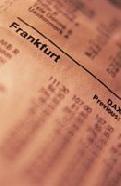
 |
|
| Financial Terms | |
| cost of production report |
|
Information about financial, finance, business, accounting, payroll, inventory, investment, money, inventory control, stock trading, financial advisor, tax advisor, credit.
Main Page: stock trading, payroll, inventory, financial advisor, inventory control, financial, money, accounting, |
Definition of cost of production report
cost of production reporta process costing document that
Related Terms:Accelerated cost recovery system (ACRS)Schedule of depreciation rates allowed for tax purposes. Agency cost viewThe argument that specifies that the various agency costs create a complex environment in Agency costsThe incremental costs of having an agent make decisions for a principal. All-in costTotal costs, explicit and implicit. Annual reportYearly record of a publicly held company's financial condition. It includes a description of the Auditor's reportA section of an annual report containing the auditor's opinion about the veracity of the Average cost of capitalA firm's required payout to the bondholders and to the stockholders expressed as a  Bankruptcy cost viewThe argument that expected indirect and direct bankruptcy costs offset the other Carring costscosts that increase with increases in the level of investment in current assets. Cost company arrangementArrangement whereby the shareholders of a project receive output free of Cost of capitalThe required return for a capital budgeting project. Cost of carryRelated: Net financing cost Cost of fundsInterest rate associated with borrowing money. Cost of lease financingA lease's internal rate of return. Cost of limited partner capitalThe discount rate that equates the after-tax inflows with outflows for capital Cost-benefit ratioThe net present value of an investment divided by the investment's initial cost. Also called  Equivalent annual costThe equivalent cost per year of owning an asset over its entire life. Execution costsThe difference between the execution price of a security and the price that would have Financial distress costsLegal and administrative costs of liquidation or reorganization. Also includes Fixed costA cost that is fixed in total for a given period of time and for given production levels. Friction costscosts, both implied and direct, associated with a transaction. Such costs include time, effort, Incremental costs and benefitscosts and benefits that would occur if a particular course of action were Information costsTransaction costs that include the assessment of the investment merits of a financial asset. Market impact costsAlso called price impact costs, the result of a bid/ask spread and a dealer's price concession. Market timing costscosts that arise from price movement of the stock during the time of the transaction Net financing costAlso called the cost of carry or, simply, carry, the difference between the cost of financing Opportunity cost of capitalExpected return that is foregone by investing in a project rather than in Opportunity costsThe difference in the performance of an actual investment and a desired investment Price impact costsRelated: market impact costs Production payment financingA method of nonrecourse asset-based financing in which a specified Production-flow commitmentAn agreement by the loan purchaser to allow the monthly loan quota to be Replacement costcost to replace a firm's assets. Reported factorThe pool factor as reported by the bond buyer for a given amortization period. Reporting currencyThe currency in which the parent firm prepares its own financial statements; that is, U.S. Round-trip transactions costscosts of completing a transaction, including commissions, market impact Search costscosts associated with locating a counterparty to a trade, including explicit costs (such as Shortage costcosts that fall with increases in the level of investment in current assets. Sunk costscosts that have been incurred and cannot be reversed. Trading costscosts of buying and selling marketable securities and borrowing. Trading costs include Transactions costsThe time, effort, and money necessary, including such things as commission fees and the True interest costFor a security such as commercial paper that is sold on a discount basis, the coupon rate Variable costA cost that is directly proportional to the volume of output produced. When production is zero, Weighted average cost of capitalExpected return on a portfolio of all the firm's securities. Used as a hurdle Cost basisAn asset’s purchase price, plus costs associated with the purchase, like installation fees, taxes, etc. Cost of goods soldThe cost of merchandise that a company sold this year. For manufacturing companies, the cost of raw MACRS (Modified Accelerated Cost Recovery System)A depreciation method created by the IRS under the Tax Reform Act of 1986. Companies must use it to depreciate all plant and equipment assets installed after December 31, 1986 (for tax purposes). UNITS OF PRODUCTIONA depreciation method that relates a machine’s depreciation to the number of units it makes each Absorption costingA method of costing in which all fixed and variable production costs are charged to products or services using an allocation base. Activity-based costingA method of costing that uses cost pools to accumulate the cost of significant business activities and then assigns the costs from the cost pools to products or services based on cost drivers. Annual ReportThe report required by the Stock Exchange for all listed companies, containing the company’s financial statements. Avoidable costscosts that are identifiable with and able to be influenced by decisions made at the business Cash costThe amount of cash expended. CostA resource sacrificed or forgone to achieve a specific objective (Horngren et al.), defined Cost behaviourThe idea that fixed costs and variable costs react differently to changes in the volume of Cost centreA division or unit of an organization that is responsible for controlling costs. Cost controlThe process of either reducing costs while maintaining the same level of productivity or maintaining costs while increasing productivity. Cost driverThe most significant cause of the cost of an activity, a measure of the demand for an activity Cost objectAnything for which a measurement of cost is required – inputs, processes, outputs or responsibility centres. Cost of capitalThe costs incurred by an organization to fund all its investments, comprising the risk-adjusted Cost of goods soldSee cost of sales. Cost of manufactureThe cost of goods manufactured for subsequent sale. Cost of qualityThe difference between the actual costs of production, selling and service and the costs that would be incurred if there were no failures during production or usage of products or services. Cost of salesThe manufacture or purchase price of goods sold in a period or the cost of providing a service. Cost-plus pricingA method of pricing in which a mark-up is added to the total product/service cost. Cost poolThe costs of (cross-functional) business processes, irrespective of the organizational structure of the business. Cost–volume–profit analysis (CVP)A method for understanding the relationship between revenue, cost and sales volume. Direct costscosts that are readily traceable to particular products or services. Financial reports or statementsThe Profit and Loss account, Balance Sheet and Cash Flow statement of a business. Fixed costscosts that do not change with increases or decreases in the volume of goods or services Full costThe cost of a product/service that includes an allocation of all the (production and Indirect costscosts that are necessary to produce a product/service but are not readily traceable to particular products or services – see overhead. Job costingA method of accounting that accumulates the costs of a product/service that is produced either Labour oncostThe non-salary or wage costs that follow from the payment of salaries or wages, e.g. National Lifecycle costingAn approach to costing that estimates and accumulates the costs of a product/service over Marginal costThe cost of producing one extra unit. Non-production overheadA general term referring to period costs, such as selling, administration and financial expenses. Opportunity costThe lost opportunity of not doing something, which may be financial or non-financial, e.g. time. Period costsThe costs that relate to a period of time. Prime costThe total of all direct costs. Process costingA method of costing for continuous manufacture in which costs for an accounting compared are compared with production for the same period to determine a cost per unit produced. Product costThe cost of goods or services produced. Production overheadA general term referring to indirect costs. Relevant costThe cost that is relevant to a particular decision – future, incremental cash flows. Semi-fixed costs costs that are constant within a defined level of activity but that can increase or decrease when Semi-variable costscosts that have both fixed and variable components. Standard costsA budget cost for materials and labour used for decision-making, usually expressed as a per unit cost that is applied to standard quantities from a bill of materials and to standard times from a Sunk costscosts that have been incurred in the past. Target costingA method of costing that is concerned with managing whole-of-life costs of a product/service during the product design phase – the difference between target price (to achieve market share) and the target profit margin. Unavoidable costA cost that cannot be influenced at the business unit level but is controllable at the corporate level. Variable costA cost that increases or decreases in proportion with increases or decreases in the volume of production of goods or services. Variable costingA method of costing in which only variable production costs are treated as product costs and in which all fixed (production and non-production) costs are treated as period costs. Weighted average cost of capitalSee cost of capital. Cost of goods soldThe cost of the items that were sold during the current period. activity based costing (ABC)A relatively new method advocated for the capitalization of costsWhen a cost is recorded originally as an increase conversion costRefers to the sum of manufacturing direct labor and overhead cost of capitalRefers to the interest cost of debt capital used by a business financial reports and statementsFinancial means having to do with fixed expenses (costs)Expenses or costs that remain the same in amount, Related to : financial, finance, business, accounting, payroll, inventory, investment, money, inventory control, stock trading, financial advisor, tax advisor, credit. |